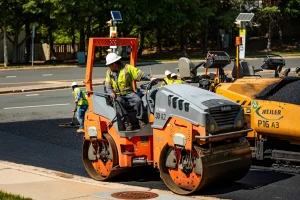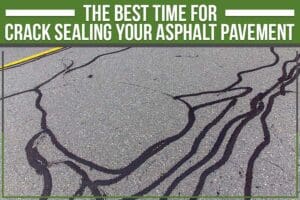A milling machine is a device that uses rotary cutters to remove material from a workpiece through a rotating axis. It has many advantages over other machines, so it is popular in manufacturing. In this blog post, Brothers Paving & Concrete will discuss the workings of a milling machine and some of its advantages!
What is milling?
Milling is a technique performed using a machine in which the cutters revolve to separate the material from the workpiece accessible in the direction of the tool axis angle. We can do a variety of operations and activities with the assistance of the machine, ranging from minor to big things.
It is the most often used production mechanism in machine shops and industries for producing high-precision products and parts in various forms and sizes.
Milling machine:
A milling machine is mainly used in the metalworking sector. Milling machines are equipment used to cut metal, wood, and other solid materials. Depending on a pre-existing design, they can be positioned vertically or horizontally to carve out materials. These devices shape solid items by removing surplus material to make a completed product. Milling machines may perform a wide range of complex cutting operations, including slot cutting, threading, rabbeting, routing, planning, and drilling.
How do a milling machine work?
The milling machine’s operation is straightforward and takes just manual effort. The worker must secure the tool and workpiece using the transverse handles, and a motor will transform electrical energy into mechanical energy.
First, the multi-plate cutting tool is secured to the Arbor with tool posts, and the workpiece is securely held in the machine vice. The saddle is then positioned according to the size of the workpiece, allowing the cutting tool to pass over the surface and remove the material.
The motor is aligned with the cutting tool’s axis in the driving mechanism, allowing the Arbor to be directly linked to the engine and the energy (rotary motion) of the motor shaft to be delivered to the Arbor and then to the Cutting Tool.
The table and workpiece are moved over to the milling cutting tool called Feeding while the milling cutting tool is spinning.
Operators remove the material from the workpiece due to the feed and cutting tool revolution. The transverse handle is then controlled per the need, and the workpiece is fed over to the cutting tool.
What are the benefits of a milling machine?
It provides good support:
The milling machine’s size and robust structure provide fantastic support for handling large and heavier equipment without causing damage.
Fast speed:
The metal removal rate is exceptionally high in milling because the cutter revolves at high speed and has several cutting edges.
Better surface finishing:
Milling machines provide better surface finishing due to the presence of multi-cutting edges.
High Accuracy:
Milling machines produce high-accuracy products, particularly in the case of the most modern type of milling machine, the CNC machine.
Broad Application:
The indexing head suits many applications since it allows for precise task rotation. Milling can create flat, uneven, curved, slotted, and gear-cut surfaces, among other things.
Do you seek the expertise of a business that can restore your asphalt surfaces? Brothers Paving & Concrete in Manassas, VA. We provide surface milling services to repair and restore your asphalt’s surface. We have skilled professionals in our team that can complete the task fast and effectively.





